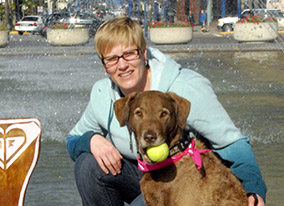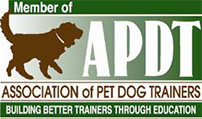You see, but you do not observe”-Sherlock Holmes
Free your training from this frequent error
The above quote is something that really fits all dog sports training. You need to not just “see” behavior of your dog, but you need to observe it. Observation involves noting changes and perceiving what is really happening in your training.
One of the things I hate the most in dog training is having trained something, and then deciding that is not really what I wanted. Usually this comes in the form of some behavior I have chained into my final one. Mouthing a cold article before picking up a hot one, head drop on an about turn while heeling or fidget feet on stays. Those are just a few, and I have done them all. So, what is the real culprit when something like this happens? Not setting or maintaining criteria is usually the crux of the matter. You may not really have had a clear picture of exactly what you wanted that pick up of the hot article to look like, so what to do when your dog goes out and picks up/drops the cold article and then immediately picks up the hot one. Usually we are so happy to see the behavior that we want, the correct discrimination in this case, that we want to reward it. You may not even notice that it is starting to be a regular occurrence, this picking up/dropping of a cold article, so you may not even realize that you are reinforcing behavior 50-60% of the time. Your dog does.
When something like this happens, and I get frustrated, or a student does, I just remind that what if the AKC changed the rules? What if the rules now stated “the dog must go to the article pile, pick up/put down 1 cold article before picking up and returning with the correct article”? Now a different story! We would be so happy! Look how we are training that chain so nicely.
Have you ever needed directions somewhere, so you stop and to ask someone, say at a gas station. “Where is Baker Ave?”, you ask them. They reply “ take a left out of here, go down 3 stop lights, turn right, and about ½ mile down, you’ll see it”. Okay, got it. Then you turn to leave, and they say “wait, actually you’ll be better off taking a left, then a right at the first stop light, then a left and the next stop sign, and down about ½ mile you’ll see it”. Ummm, I have no clear picture in my head at all. Changing the directions on me, that blows my mind, thought I had it, but now I don’t. Worse than that, is going the wrong way, not getting where I want, then getting the right directions, but having gone the wrong way (thinking I was right), now I have to fight my tendency to go the wrong way. Think about that in relation to teaching our dog. We tell them many times over “please pick up the cold article first” and then we decide that we no longer want that, how confusing! How discouraging. They traveled down that path to reinforcement many times, you told them it was the way, and now the rules have changed. This is harder still because the problem looks the same.
When this happens, then remedial training is the key, but it is not an easy fix. You will have to set up training sessions to directly address the pick up/put down of the cold article, isolating the problem to show your dog what you want now. You will have to make sure not to reinforce the unwanted behavior anymore, but you must still keep the reinforcement rate high on the behavior you do want. Then repeat the session, making sure to really observe the behavior, to make sure you give good information.
Often times, one of the hardest things in remedial training is not falling back into your old training habit. You want to change your behavior, and that may be harder than changing your dog’s. You have to have new “eyes”. You need to see the old behavior you had, and not reinforce it anymore, you will have to see your new picture of what you want, and reward that every time you train.
One of the most helpful pieces of training advice I have ever gotten is to keep my training sessions short. Putting my dog away, especially in remedial training, allows me to assess if things are changing the way I want. Or as Bob would say “are you better off?”. If not, time for a new plan, if you are, time for a new plan. Making sure you are getting closer to the picture you want, every step of the way.
Best training practice; know what you want and how it is to look before you ever start training. Have a clear picture of what you need, and make sure you use your reinforcement to give good information to your dog. Nice clear directions, that gets them where they need to go, without any misinformation that is confusing and ultimately discouraging to you and the dog.




For me that is so much easier said than done. To get to the behaviour I allow a bigger picture then work at whittling it down to what I really want. I think my problem is being able to refine the behaviour into smaller bits. e.g. signal’s down I have allowed a few steps in order to get the down. Now I have to figure out how to get rid of those steps.
You are so right, Diane. Do you see how allowing the bigger picture can cause confusion if that is not the picture you want in the end? If you have steps and then a down when giving your down signal, that is a completely different behavior than a down only. Isolating that down behavior is key. Stay close, re-train it completely if you have to, and then keep your criteria as you train, really observing to see if there are any steps before the down behavior.
Video is very helpful.